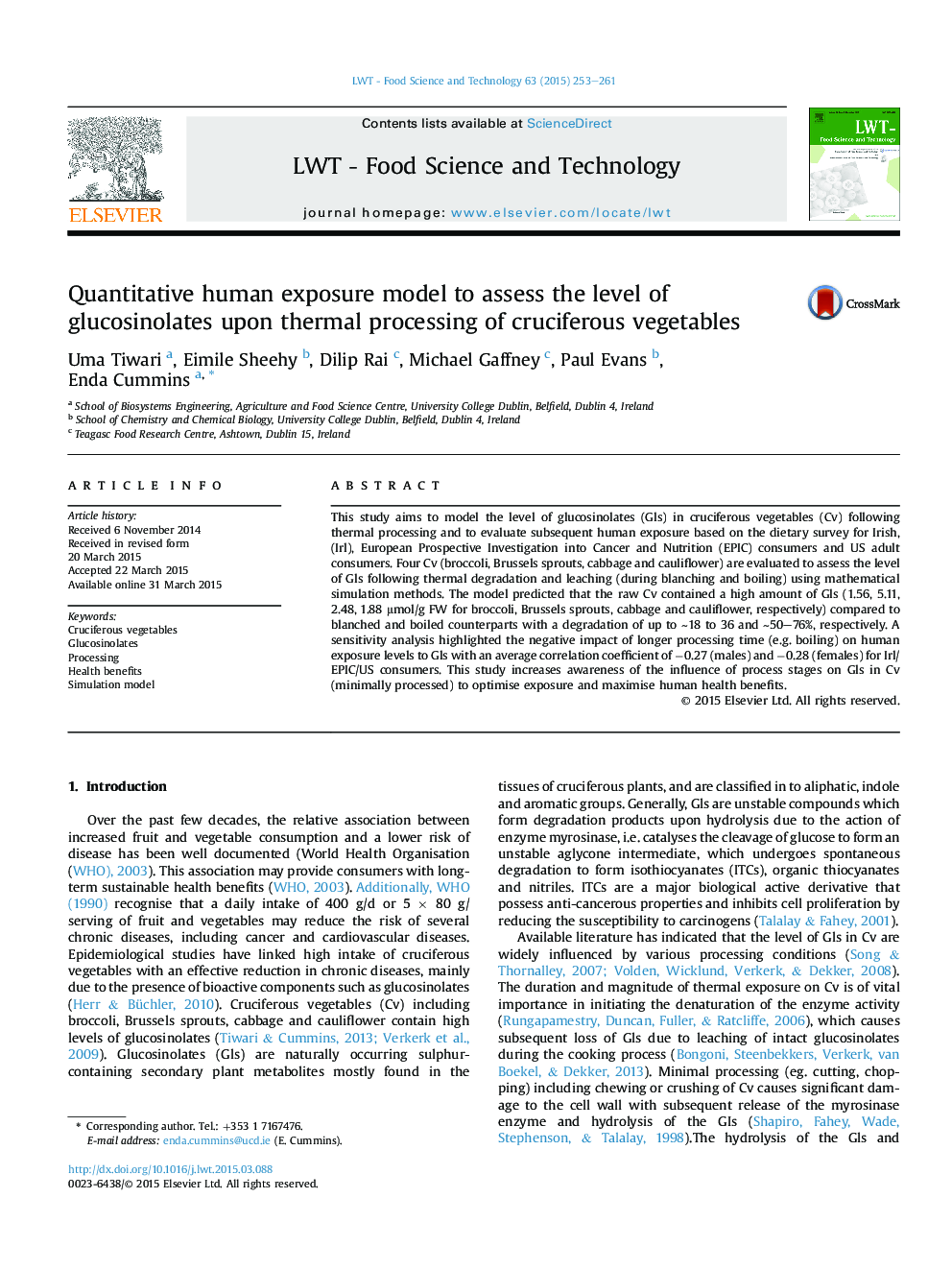| Article ID | Journal | Published Year | Pages | File Type |
|---|---|---|---|---|
| 6402032 | LWT - Food Science and Technology | 2015 | 9 Pages |
â¢Short blanching of cruciferous vegetables minimises the loss of glucosinolates.â¢The importance of thermal degradation and leaching of glucosinolates is highlighted.â¢A sensitivity analysis highlighted the importance of glucosinolate bioavailability.â¢The study increases awareness of the influence of process stages on glucosinolates.
This study aims to model the level of glucosinolates (Gls) in cruciferous vegetables (Cv) following thermal processing and to evaluate subsequent human exposure based on the dietary survey for Irish, (Irl), European Prospective Investigation into Cancer and Nutrition (EPIC) consumers and US adult consumers. Four Cv (broccoli, Brussels sprouts, cabbage and cauliflower) are evaluated to assess the level of Gls following thermal degradation and leaching (during blanching and boiling) using mathematical simulation methods. The model predicted that the raw Cv contained a high amount of Gls (1.56, 5.11, 2.48, 1.88 μmol/g FW for broccoli, Brussels sprouts, cabbage and cauliflower, respectively) compared to blanched and boiled counterparts with a degradation of up to â¼18 to 36 and â¼50-76%, respectively. A sensitivity analysis highlighted the negative impact of longer processing time (e.g. boiling) on human exposure levels to Gls with an average correlation coefficient of â0.27 (males) and â0.28 (females) for Irl/EPIC/US consumers. This study increases awareness of the influence of process stages on Gls in Cv (minimally processed) to optimise exposure and maximise human health benefits.
